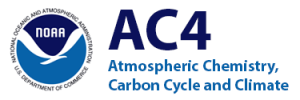- Year Funded: 2022
- Principal Investigators: Allen Goldstein (University of California, Berkeley)
- Co-Principal Investigators: Nathan Kreisberg (Aerosol Dynamic Inc.)
- Programs: AC4 Funded Project
The 7 largest wildfires in California took place from 2015 to 2020, with 2021 already being another extreme wildfire year. Many of these large wildfires happened at the wildland-urban interface (WUI), where human made structures mix with natural vegetation. Thus, it is critical to understand emissions from WUI wildfires, including emissions from burning structures, and the transformation of the emitted materials in the atmosphere. This project will investigate the gas and particle phase organic composition of smoke from WUI fires, including structures, and smoke arriving in the San Francisco Bay area that has been subject to various levels of aging. By collecting continuous gas and particle measurements using in-situ laboratory-based instrumentation, coupled with rapid deployment of a mobile sample collection platform, the team proposes to study the dynamically changing composition of wildfire smoke in a highly populated urban region during two fire seasons. The team also proposes to measure structure fires emissions and determine emission factors through collaboration with an ongoing study of structure combustion at the National Institute of Standards and Technology funded by CalFire.


